An Entrepreneur’s Tale
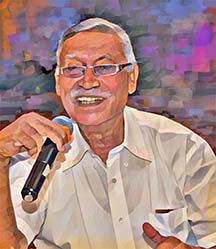
I arrived in Mumbai (then Bombay) in the year 1958 with Rs. 2 in my pocket. I had just finished my studies up to Intermediate Science (now equivalent to Grade 12) at the University of Madras and was wondering what to do next. Aged 18, I did not have a plan. I just knew that I wanted to move out of my hometown and live in a metro. Mumbai was the city of dreams and since my eldest sister and her family were living there at the time, I moved in with them for a while.
Having found nothing to do in my initial days there, I used to go to a nearby stadium and practice competitive sports, especially athletics. It was there that I made my first set of friends in Mumbai. I spent the next four years training in athletics and became pretty good at it. All this while I kept scouting for a job, albeit unsuccessfully. I had no real contacts in the corporate world in Mumbai and had no idea how to go about getting a job. All that changed when one evening, a fellow athlete who was employed with Larsen & Toubro Ltd. (L&T) asked me to apply there for a position. He proceeded to hand me a printed application form the next day, and encouraged me to give it a shot.
I did apply and to my surprise, I received a call for an interview. Soon I found myself standing before the massive front doors of L&T’s South Bombay Corporate Office. I glanced at my reflection in the beautifully inlaid glass panels. An imposing doorman wearing an immaculate turban swung it open for me, a gilded door knob disappearing beneath his massive hand. Once inside, the office was nothing short of spectacular. A kind lady at the reception took my interview letter and asked me to be seated in a common waiting area that was probably meant for visitors, customers and prospective employees like me. The place was so grand and the ambience so overwhelming, that it was impossible not to squirm a little whilst sitting there, waiting for my first -ever interview.
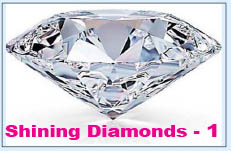
My fears were misplaced as the interviewer turned out to be a benevolent Parsi gentleman. He instructed me to proceed to his workshop in Powai for another interview with a General Manager who would decide how to place me. At the workshop I met a rather strict-looking South Indian gentleman who spoke very little, and in a rather firm manner asked me if I’d like to work with him in factory administration managing about 5000 workers in three shifts. I said “No, thank you”. So he sent me off to the Materials Handling Department (Dept.) for a third interview.
After a preliminary interview involving some general knowledge questions, I was instructed by my interviewer to join his Dept. the following week. I chose this opportune time to tell him that I would prefer to work with the Sales Dept. His response was an irate, “Who sent you here then? Go back to him!”
So now I was back with the kind Parsi gentleman who had interviewed me first. I told him what happened and being the patient soul he was, he made a few calls and sent me off to work with the Dispatch Dept. I spent a couple of months there.
I was then moved to the Imports Dept. This is where I learnt how to import, raw materials, components, capital equipment, and in addition, how to clear imported equipment from the Customs Dept. It was a tough job and my boss used to send me regularly to clear difficult consignments. After a year’s experience I was send back to the Central Staffing Dept. with a recommendation saying, “This boy is very capable and he can be trained to be the next head of this Department.” This did not exactly bode well with the seniors in Imports, who were probably relieved that my tenure there had come to an end.
Given my track record, for my last year of training, the personnel manager at Staffing offered me my choice of Dept. that I would like to be assigned to. He also mentioned that I was nominated to attend a diploma course in Marketing and Accounting from Davar’s College of Commerce, Mumbai (through L&T’s training and education programme). I had realised by now that I was pretty good at multitasking and so my work days stretched well over 14 hours, starting with college at 8:00 a.m. followed by eight hours of work at L&T and an evening course in LLB from KC Law College, Bombay University. I had taken this course up independently since I had always had an interest in law. I also made it a point to continue my athletics practice on Sundays and holidays.
Those were some of my best days, and I couldn’t have imagined a more fitting end to my student life. I graduated as the best student and sports champion at Davar’s College, and also the sports champion at both KC Law College and L&T.
Things progressed and I was then sent to L&T’s Powai Works for further training for a year. I joined the Labour & Welfare Dept. and worked for a gentleman, Mr. Alexander, and his assistant Mr. Reley, both patient, large-hearted souls. This is where I learnt to write with both my hands simultaneously. Mr. Reley showed me how, as otherwise we were unable to complete records on time. We were due to make payments to 5000 workers the following morning, so writing with both hands was a necessity, not an option. And it was exhilarating to know that I could do it.
Finally, after relentless pleas, I was released to work with the sales team associated with the Drilling and Mining Dept. Sales introduced me to the concept of letter writing and dictation. I was writing letters and also dictating them and getting them signed by my boss. Naturally I got quite adept at this, enough for him to tell me one day “From now on, you sign your own letters. But remember, when you sign you take the full responsibility of what you write and to whom you write.”
It used to be a practice in those days to circulate copies of all letters written by the Sales Department to all team members so that errors if any were easily identified and rectified before the letters were sent out. This ensured that I was doubly careful about the content of not just my letters but every letter that was circulated within the Dept.
Some of my most memorable experiences came during my tenure at Drilling & Mining. L&T had begun importing a large quantity of industrial diesel engines. At the time, the Bombay Customs Dept. was more familiar with import duty levies on automobile diesel engines, since they were being imported regularly. Industrial diesel engine imports were still few, and as a result, L&T was being charged the same duty as automobile diesel engine imports. No one in Customs really knew the difference between the two engines back then. None of my colleagues in my Dept. seemed to know either. So I went about gathering information the only way I could (internet and Google were still three decades away from existence). I spoke with as many subject matter experts as I could in various departments across the company and referred to several books on the subject as well. Armed with as much information as possible, I drafted a letter to the Customs Officer explaining the difference between the two engines. The letter was reviewed internally before it was shared with the Customs Dept. They responded positively, and agreed to lower the customs duty on our imports. This was a big win for us and the news spread. My colleagues started perceiving me as someone who could deliver consistently in any situation. It renewed my confidence and belief that I was on the right path.
Opportunities to shine knocked often. I don’t know if it was my curiosity or my luck. Perhaps a bit of both. Another time, my boss called me and said, “I have some old diamonds which are larger than the standard size we use. Can you sell them for me?”. “Yes sir, I can do that,” I said, without batting an eyelid.
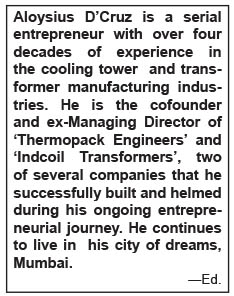
By then I was known as a bit of an expert in diamond drilling and diamond bits (drilling tools). Drilling is a skill that requires precision and knowledge of rock composition. When the rock is hard, you need bigger sized diamonds to drill. The work is labour intensive, and efficiency is key. I knew a friend and a customer who was drilling at a dam site then. I met him and told him about the diamonds, adding’ “If you want them, pick them up now. My boss has two buyers in the pipeline, so you might want to make an offer he can’t refuse.”
I walked away with an order for the diamonds worth Rs. 2 lakhs. This was the 1960s and Rs. 2 lakhs then is worth Rs. 2 crores today.
The deal became news again in L&T’s informal circles. By now I was also regularly writing articles in their corporate magazine on relevant technical topics like the performance of drill bits on various rock strata. All of this gave me an edge over my colleagues at the time. Long story short, I had arrived! I was quickly made permanent as a Sales Officer with Drilling & Mining. And being the youngest member of the sales team, I was unabashedly walking on air for quite a while. But it also came with a ton of responsibilities. Sales was hard, but very fulfilling. I networked a lot, made some excellent contacts, and closed some memorable sales deals during my days there.
But ‘dream runs' are generally short lived. You need to catch the next run before the current one ends. We got news that the Dept. was being shut down due to low sales volume. In hindsight, it was the best thing that could have happened to me at a pivotal moment in my career. I was at my peak performance, and was confident that I could find opportunities in any other Dept. within the company. There is a saying that when you are ready for something, the universe conspires to make it happen.
A Malayali gentleman who was then Divisional Manager of L&T’s Cooling Tower Dept. reached out to me. He knew who I was and had already arranged for a transfer for me from Drilling & Mining to Cooling Towers. And so began a lifelong career. My years spent in all the other depts. armed me with experience and courage, two of the many cornerstones that helped me carve my path to success over the years to come. One cannot gain experience without courage. And courage can only grow more formidable with experience.
I spent the next two years learning everything there was to know about Cooling Towers.
There were so many iconic moments. On one occasion, my boss sent me on a seemingly unachievable errand to a client’s site with the words, “This is a difficult job. Go to Faridabad and convince the executive engineer on site to give us our material back.” He continued, “Captain, if you are successful, the credit goes to you. If you fail to get it, don’t worry, I will take the blame.” I don’t recall how I convinced the engineer and secured our material, but I remember quite liking the name ‘Captain’. It had a nice ring to it. The news of my success went around, and the name caught on. ‘Captain’ became a lifelong nickname, staying with me long after my days in L&T. I remember my son joking many years later that one of his friends actually thought I was a captain of a ship in the merchant navy!
During my tenure in the cooling tower division, there were opportunities to grow in other cities too. I was offered the position of Branch Manager at Goa and Raipur. I refused both times as my children had started schooling in Mumbai, and I loved the city too much to leave.
By this time my brother who had completed his Electrical Engineering joined me in Mumbai. He was a tremendous support and strength for me. I had been contemplating striking out on my own for some time now, and with my brother by my side, the idea started to take a more definitive shape. I spoke to my boss about wanting to start a business. Naturally we shared a great rapport by then, and he had a lot of confidence and trust in me (another virtue that went a long way in my business years). He loaned me Rs. 25,000/- towards seed capital. The year was 1969 and this was a huge sum of money. My brother and I proceeded to start a business in manufacturing transformers. But as it happens with most inexperienced business startups running on limited resources, our capital started diminishing rapidly and we soon had to start looking for alternative sources of finance. I managed to organise another Rs. 25,000/- from my hometown Trivandrum, but that too did not last long. It was an arduous, grinding cycle of organising finances, while struggling to keep the business afloat with virtually no success.
But fortune really does favour the brave. Our new company ‘Indcoil Transformers’ comprised of four founding partners, namely, two persons from L&T, my brother and I. A few months after we launched our transformer business, the Cooling Tower Division at L&T closed down. We had cut loose from the mother ship at the right time. I then proceeded to float a second business in the name of ‘Thermopack Engineers.’ Both my companies were started with very little resources, so obviously we were always in want of finances.
In the mid-1970s, the Cooling Tower market was monopolised by a single conglomerate based out of Kolkata (then Calcutta). We minnows were their only competition, and we had started to become visible enough for them to sit up and take notice. A meeting was once arranged with the owner of this giant competitor, far senior and wiser in years than I was. The purpose was primarily intimidation. “I know you have started two companies, transformers and cooling towers,” he said. “Better stick to manufacturing transformers. If you try to enter my market, I’ll find ways to end your business. Remember that!”
The fight for survival was far greater than we had anticipated. But I’m forever thankful to that gentleman for throwing down the gauntlet. It provided a lifetime of motivation.
I built a strong team over the years, trained them and sent them out into the world with the same confidence my boss at L&T had sent me to Faridabad years ago. The team worked together brilliantly. Whenever I sent them on an assignment, they fought their way through and came back victorious. This renewed their confidence in themselves, both as individuals and as a team, which grew to become a formidable force with my support and backing. We were now a well reputed company in India for transformers and the clear #2 behind our giant adversary in cooling towers.
Our survival depended on outwitting the competition, second guessing their next move and surprising them with ours. We had substantial technically capability, an excellent track record, but lacked international recognition. And our competitor was using this last fact to the hilt. So I chose to make a bold move. In 1983, we participated in the international ‘Hannover Industrial Fair’ in Germany. It was the first time a small Indian cooling tower company like ours had dared to place themselves in an elite engineering forum. We struck deals with an Australian and Malaysian Company for transfer of cooling tower technology and know-how, and then proceeded to publicise the news in all the leading English and regional language newspapers at home with the title, ‘Thermopack Engineers Sells Cooling Tower Know-How to Australia and Malaysia’. This shocked our competitor, whose unique selling proposition at the time was 'superior technical know-how from a leading US company’. The fact that a small Indian competitor had reverse-sold cooling tower know-how to global companies in Asia-Pac came as a huge embarrassment to them and put a dent in their armour.
The buzz generated a spurt of new orders and business from prestigious clients across India and abroad. Consultants, technical experts and OEMs (original equipment manufacturers) sought to have our brand of cooling towers on their list of approved manufacturers. Many even offered to partner with us on technology or buy us out. We politely refused. We had all the technology required in the field of cooling towers and we were strong enough to go it alone. We had arrived.
However, as in the lives of most small businesses, we didn’t have surplus funds. We didn’t even have a respectable enough office or workspace that we could show our clients at the time. We were running on the knowledge and skills our young sales and execution teams had learnt along the way from me and my immediate directs. This was a team of executives handpicked and trained by me over the years driven by raw talent, street-smartness and pure grit to perform to the best of their ability in the most adverse circumstances.
The sales team was particularly empowered. I taught all of them the basics of cooling tower design so that they understood the technology they were selling from scratch and could present themselves better in sales pitches. I also connected them with component manufacture so that they could address after sales and refurbishing requirements accurately. While this was a great advantage for the company, it also came with some negatives. Some of our employees left, floated their own companies and became competitors. But most of these offshoots had to wind up or sell out due to lack of finances over the years. They found it hard to match our production, installation and after sales capabilities. Turns out, it takes more than just knowing design and sales to run a successful business after all. Tough luck.
I savoured some wonderful moments with my company ‘Thermopack Engineers’. Some of the best remain the most hard-fought bids that we won. One such prestigious order came from a large power generation company. It was a final stage discussion and our competitor’s owner had also come down for the same. I was in discussion with the client’s technical manager who insisted that my design was inferior to my larger competitor. He referred to both our drawings and showed me that the loading on our vertical posts of the cooling tower were 6 feet long, while our competitors was 4 feet long, implying a more compact and efficient design. I asked him to look at the drawings more closely and explained that our post dimensions were 6 x 4 feet while our competitors was 4 x 6 feet. Being a technical expert he immediately understood the load application. I also explained how our design was able to bear higher wind velocities of up to 120 km/hr. as against 100 km/hr. as quoted by my competitor. He smiled, folded his file and told me to collect the order from Purchase Dept. There had been a ton of preparation that went into ensuring we were serious contenders for this job, and it was supremely satisfying to pull the rug out from under my competitor’s feet and walk away with an order worth Rs. 4 crores.
As I stepped outside, my competitor was waiting for me. Gracious in defeat, he congratulated me on our win and lauded our technical superiority. To be honest, I’m not a technical guy. To me, it was common sense and some quick thinking that saved the day!
Here’s a little secret. Life actually improves with every decade. My 40s turned out to be my best years yet. Business was good and the family was settled in familiar routines. My wife and I had moved to a new place in the heart of Bandra West, very close to where we once lived on rent as a newly married couple. It was a familiarity she had always craved, close to the kids' school, close to the church and close to her extended family.
I was content with what I had achieved so far. Now, I wanted something else. I wanted to give back to my community. My roots were in Kerala, but I had made my home amongst the Christian community in Mumbai. At the time, this group was close knit. Every family (understandably) wanted the breadwinner of the house to get the best job available, and stay put till retirement. Job security was paramount. Opportunities were few and career ladders to climb, even fewer. I was lucky to have had some help and guidance from my boss when I was starting out on my entrepreneurial journey. I felt it was time for me to help the Christian youth in my community achieve their entrepreneurial dreams too.
Being a risk-averse community made this a little challenging. Several other communities already had established family businesses, their second and third generation kids growing up with entrepreneurship being part of the conversation at home. We needed forums that could facilitate similar conversations about entrepreneurship in our own community. A platform to promote the business mindset and debunk myths and fears that were holding our kids back from making it on their own.
I started scouting for organisations already registered and functioning in Mumbai doing this kind of work and found one called the Indian Christian Economic and Entrepreneurial Development Association (ICEEDA). I joined them and quickly became their President.
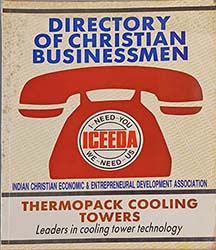
A series of seminars were organised by ICEEDA, including one that I personally created and delivered, called “Think Business”. It was held at the Xavier institute of Management (Now XIMR) in Mumbai and in attendance was Fr. Anthony D’Souza, then Director of XIM. Fr. Anthony was a powerful speaker who had been invited to the United Nations General Assembly to speak on developments in India. He was also a close associate of the Nobel Peace Prize laureate, Archbishop Desmond Tutu. To have Fr. Anthony appreciate my seminar and then offer me a position as Director at XIM was humbling, and a moment of incredible pride. I also made it a point to deliver seminars on entrepreneurship at various colleges across Mumbai whenever possible. Many who attended my seminars approached me personally for assistance and advice in their businesses. I was more than happy to oblige.
I’ve always considered education to be a lifelong quest. Somewhere along the way, I craved for a Master’s Degree. Mysore University, under the Manasa Gangotri scheme, offered an M. A. Degree on various subjects at the time. I signed up for M. A. Social Sciences and quickly found that studying for a degree while running a business was a nightmare. My work left me with very little time to catch up on study material. The only time I seemed to have to myself was the 45-60 minute drive from home to office and back. So, I installed a stereo system in my car and played a recorded cassette of my classes to brush up my study portions. It was one of the few times that I looked forward to traffic jams. And yes, I received my M. A. Degree at the age of 45. Remember that saying I mentioned earlier about the universe conspiring to make things happen? Well it really does.
Our businesses forged ahead for 25 years. We won some, lost some. Fell on some very tough years, rode the highs and ploughed through the lows. I was reminded of something an English friend of mine once told me. He said, “If you look at the balance sheets of all the cooling tower companies in the world, you will find the last line so disappointing that you’ll eventually end up closing shop. Unless you are lucky enough find a new lifeline.” It was 1996. Two of my sons were settled in the US and the third was still in college. The industry was changing and we need a lifeline to keep pace in a new era. I decided it was time to sell my company.
Lady Luck was on our side again. One of the largest Cooling Systems manufacturers in the world based in Europe came looking for a joint venture in India. They were interested in proceeding with us but had one condition. We needed to reduce our onsite installation workforce strength by half. We had 50 technicians on company payroll at the time, so that would mean laying off 25 of them. This was an unthinkable task for a small business like ours. My workforce had been content for 25 years with absolutely no labour issues. There had been no labour union activity and no need for involvement from an external union leader. This was the worst possible time to involve one. I knew that if I outright asked my technicians to quit, they would refuse, or demand a compensation which would most likely be unaffordable by me at the time. The only thing to do under the circumstances was to engage a union leader directly, take him into confidence and have him sketch out a fair deal for my workforce.
I knew a union leader who I had dealt with briefly for my other company some years ago. Called him up and explained my problem in detail. We met a few times. The venue was always Juhu Beach, 9:00 a.m. We stood by the numerous vending stalls and discussed his plan. He didn’t speak much, but was an extremely sharp local leader who grasped the pulse of my workers quickly. A few meetings in, he showed me a figure. I said, “That payout is too big!” We went back and forth a few times. He argued that he had to be fair to the workforce. “They are probably willing to take less, because they genuinely love working for you. I’m finding it difficult to make them feel angry enough to demand more” he mused.
Over the coming weeks he drew out a plan that we followed strictly. He advised me that there might be some possibility of a strike, gheraoing, etc. and I would have to go with the flow. But he delivered on his promise and the layoff was completed successfully.
Negotiations with our European buyer now began, and we went through several rounds of discussions with their Board of Directors. I don’t think I had cause to visit as many Five Star Hotel lobbies and conference rooms in my life as I did during the summer of 1996. We were a small team of just four. My brother and I were of course there. It was like the old days all over again. And joining us was my youngest son and my accountant of many years. There were several interesting moments, which I think could make for a great book of joint venture anecdotes. But that’s for another day.
Finally, in June, we signed on the dotted line. As part of the deal I agreed to stay on as Managing Director of our new joint venture company for the first five years. Life is a path made up of several small journeys along the way. And just like that, a new journey had begun.
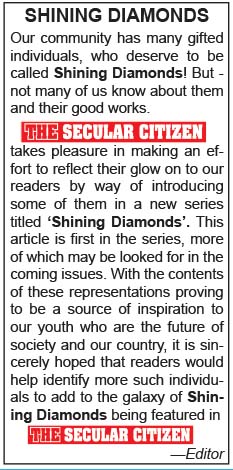
I would like to leave you with five takeaways from my days in L&T and beyond, which have stood the test of time for me in my personal and professional life. You would have heard or read these several times in the last 45 years. But back then—in a world without internet, social media and online education— they were seldom articulated. They were hard coded by experience.
- Give your employees a ladder. Everyone has aspirations, but not everyone knows how to achieve them. Your job as an employer is not just to make your people more efficient and useful to the company, but also to help them climb their individual ladder of aspiration. The years they spend with you should be the ones they cherish and speak fondly about for the rest of their lives.
- When someone approaches you for help, never refuse. Give them what you can or show them how to get what they need from another source. I always remember the quote, “Dene wala hath lene wala hath se behter hai” (“The hand that gives is better off than the hand that receives”). Your wealth is better defined by what you give freely to others, rather than what you take.
- When you sell goods or services, never leave a customer dissatisfied. His opinion about you can be an asset or liability, and it will most likely determine the success or failure of your next sale. When things go wrong, don’t take it personally. Focus on your goal and work towards a resolution.
- Keep learning and upskilling. Be forever curious. It is the only thing that will keep you relevant and thriving in an ever-changing world. This is a lifelong process. Find new things to learn even after you hang up your boots. Keeping your brain active is a vital ingredient to an interesting and engaging life.
- Find opportunities in everything, especially obstacles, and don’t let them go. You only live once, so find the courage to reach out and grab them. My executive assistant of many years once told my wife, “Your husband is an eternal optimist. Give him a sack full of sand and he will sell it as a sack of gold.”
May you always find your sack of gold.
Edited by Mark D'Cruz
Painting by Mark D'Cruz